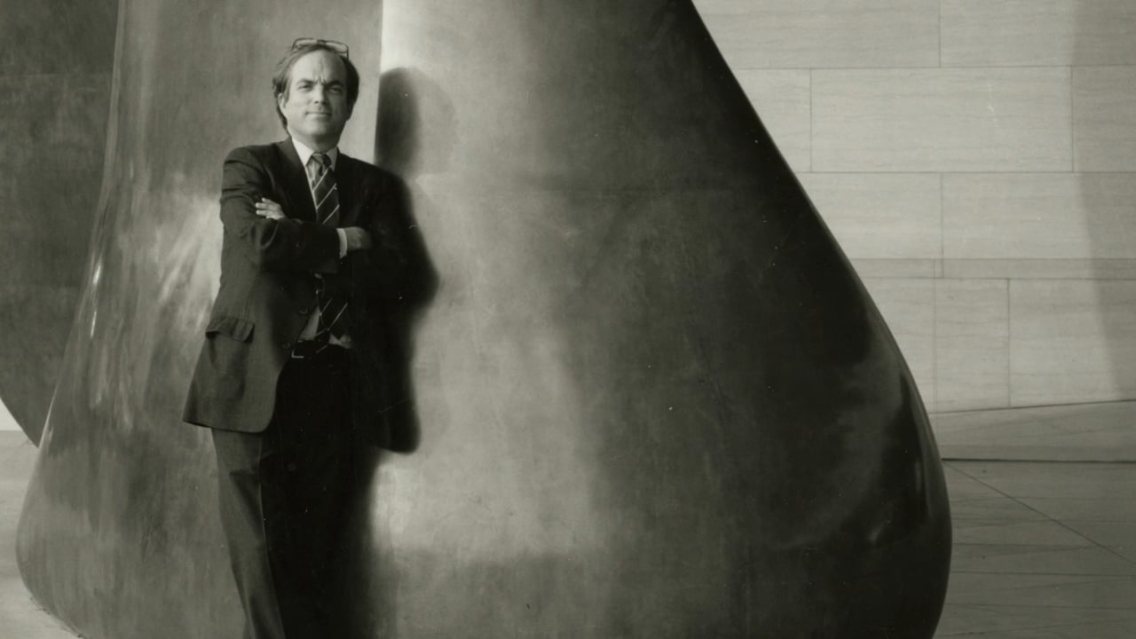A Story of Art
MIDDLEBURY, Vt. – The Middlebury College Museum of Art will soon conclude its exhibit of objects donated by the late Charles S. Moffett, a member of the Class of 1967, who made an outsized impact on the art world during his career as a curator. “A Story of Art: Gifts from the Collection of Charles S. Moffett ’67 and Lucinda Herrick” will run through December 10, 2017.
Moffett, who died in 2015, served as curator for New York’s Metropolitan Museum of Art, the Fine Arts Museums of San Francisco, and the National Gallery of Art, Washington, D.C., among others, developing a reputation as one of the world’s leading authorities on Impressionism. A New York Times obituary described him as “a curator who reframed scholarly understanding of the Impressionists and their era.”
In the final years of Moffett’s life, Richard Saunders, director of the Middlebury College Museum of Art, proposed a memorial exhibition that would highlight some of the works Moffett and his wife, Lucinda Herrick, planned to give to the College. Moffett, who was initially taken aback by the suggestion, quickly warmed up to the idea of an exhibit that could spark student interest in works that he, himself, loved and collected.
“I wanted to figure out a way to continue the narrative of Charlie’s life,” said Saunders, who then asked faculty art historian Carrie Anderson if she would be interested in teaching a winter-term course focused on about 80 of Moffett and Herrick’s donated pieces. The assistant professor of history of art and architecture was impressed with the breadth of work represented in the gift and agreed to teach the course.
Anderson, who knew Moffett by his reputation as an Impressionist expert, said she was surprised to see the diversity of the newly donated collection. “He collected what he loved; not what he thought he should collect,” said Anderson. “That was something that was really inspiring for us.”
Anderson’s students went to work in January of 2017, researching the vast assortment of objects, including landscape studies, autobiographical studies, sculpture, paintings, and photography. In small groups, they developed potential exhibition themes, eventually settling on “A Story of Art.”
“The idea that an exhibition could be arranged with a prologue, a narrative section, and then an epilogue tells the story of artistic development,” said Anderson. “At the same time it speaks to Charlie Moffett’s love of literature.”
Lucinda Herrick says that she and her late husband loved collecting together at favorite galleries in New York, Paris, and London.
“Each object here had an intensely personal story that was an ongoing relationship not only with the work, within the context of our collection, but also often long and cherished relationships with specialists, gallerists, conservators, and even art transporters,” said Herrick in remarks at the opening of the exhibit. “We developed deeply personal friendships with artists whose works are included in this exhibit, such as Nena Prentice and our extraordinary friend Edmund de Waal.”
Sophie Taylor ’20, a student in the winter-term course that curated the exhibit, said she could see Moffett’s personal connection to many of the pieces. “I think you could really feel the passion that he felt for his work in his collection,” said Taylor.
Saunders said the project also tells a broader story about the teaching potential of college museums. Moffett, he notes, developed his love of art at Middlebury, then pursued a distinguished career in the art world, culminating with 16 years as the executive vice president and vice chairman of Impressionist, modern, and contemporary art at Sotheby’s. Saunders says Moffett’s gift ensured that future generations of Middlebury students would have the opportunities to develop their own passion for art.


